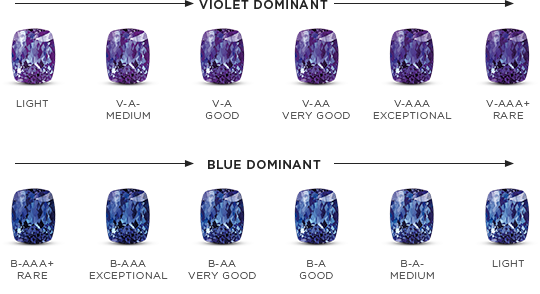No products in the cart.
0
Shopping cart
Close
0
Shopping cart
CloseNo products in the cart.
Tanzanite is the blue to the violet form of zoisite crystallizing in the orthorhombic system. With a refractive index of 1.69-1.70 and a specific gravity of 3.35, this gem is unusual for its trichroic nature. Most gems are dichroic, showing two colors, and a few are monochromatic including garnet, spinel, and diamond which show only one color. The rough tanzanite shows three different colors on the a,b and c axis of the crystal. These are blue, violet and yellow. This trichroism gives the rough a reddish-brown color with blue undertones which is known as diesel in Tanzania because of its similarity to the color of diesel fuel as it appears in a fuel container. When the gem is heated to 1000 degrees Fahrenheit the yellow is removed leaving the blue and violet colors we know as tanzanite.

Tanzanite can be separated from other gems in the rough because of its unique look caused by the trichroic nature of the gem. The naked eye is often all that is required although a dichroscope is a definitive identifier as it separates the three characteristic colors into separate windows when the rough is viewed using transmitted light. Once the gem is cut and heated the dichroscope is less definitive as it now appears as two colors and the refractive index and specific gravity become useful in separation from imitators. The dichroscope can still be of use to separate tanzanite from glass imitations as glass will show only one color and tanzanite will as a heated gem still show two colors, the blue, and the violet. The most common imitation of tanzanite is synthetic forsterite and this can easily be separated by its lower refractive index and a strong doubling of the back facets when viewed through the crown. Also useful is the Hanneman tanzanite filter.

A new treatment can pose a significantly higher risk to the novice and expert alike. This is a surface coating used to intensify the color of natural tanzanite and therefore increase its apparent value. This treatment is more difficult because the gem is a tanzanite and the dichroism is similar, the refractive index, hardness, and specific gravity are the same as untreated material. Magnification of the surface of the gem looking for the treatment tell-tail characteristics is required for identification.
Blog & Photo Courtesy:
https://www.tanzanitejewelrydesigns.com/
